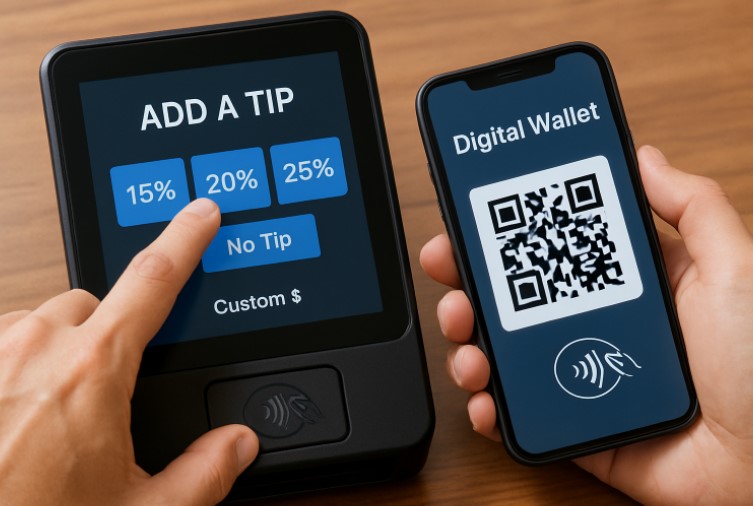The rise of digital payments has revolutionized the tipping experience across various industries, particularly in the hospitality and food service sectors. As more customers rely on credit cards, mobile wallets, and contactless payment options, traditional cash tips are becoming less common. This shift has introduced new challenges and opportunities for businesses—from ensuring fair distribution among staff to maintaining transparency in how tips are recorded and managed. Digital platforms now make it easier to track every transaction, offering both convenience and accountability.
To adapt to this evolution, many businesses are embracing advanced tip pooling software that automates the fair allocation of gratuities among employees. These tools integrate seamlessly with modern point-of-sale systems, reducing human error and ensuring that tips are shared equitably across teams. By leveraging technology to manage tips, businesses not only streamline operations but also foster trust, compliance, and employee satisfaction in an increasingly cashless environment.
The Decline of Cash and the Rise of Digital Payments
Cash transactions are on the decline worldwide. According to a Moody’s report, over 80% of adults now use some form of mobile banking or payment app—up sharply from just a few years ago. This dramatic shift accelerated during the COVID-19 pandemic, when concerns about hygiene led to a shift toward contactless options. People have become accustomed to paying with cards or phones, and this behavior change has had a profound impact on tipping practices as fewer people carry physical currency for gratuities.
With this cashless trend, both customers and businesses demanded alternative ways to facilitate tips. Hospitality and restaurant venues have adopted software solutions that enable smooth tip management, instant payouts, and precise tracking to satisfy the changing needs of guests and staff.
Digital Tipping Solutions: Convenience and Security
Digital tipping platforms now allow customers to tip with credit cards, digital wallets, and QR codes. These solutions reduce reliance on cash while allowing workers to access their earnings instantly, thereby improving financial flexibility and security. eTip, for example, features a partnership with Visa that enables employees to receive digital tips directly into their wallets in real time. Such systems reduce the risk of theft or loss and create an accurate, traceable record of income—an advantage for both personal budgeting and tax filings.
Impact on Service Industry Workers
The evolution of tipping methods has a tangible impact on workers. A study found that 82% of hospitality workers favor instant tip payouts, but only about half of employers offer such features. Digital tipping not only provides quick access to funds but also results in greater income transparency. In contrast to the uncertainties of collecting cash tips, digital records make it easier for employees to budget, plan, and establish their earnings for credit and rental applications. Timely digital payouts can lead to increased staff loyalty and enhanced job satisfaction.
Business Integration and Operational Efficiency
Switching to digital tipping simplifies business processes. Automation tools for managing restaurant tip pools assist companies in adhering to labor laws and increase transparency for employees. For employers, such integrations reduce the potential for disputes, improve staff morale, and simplify end-of-shift cash reconciliation.
Consumer Behavior and Digital Tipping
Consumers have quickly adapted to digital tipping, especially as card and mobile payments become standard. QR codes on counters and tables allow guests to leave gratuities for baristas, delivery drivers, and even street performers—groups that previously relied on cash tips. This new approach broadens access to gratuity, ensuring staff and independent workers don’t miss out due to dwindling cash in circulation. For customers, the process is faster and carries fewer security risks than exchanging physical currency.
Challenges and Considerations
Despite the clear benefits, digital tipping isn’t without obstacles. Some guests are unfamiliar or uncomfortable with non-cash options, and not all workers have access to digital wallets or bank accounts. Businesses need to invest in both infrastructure upgrades and staff training. It’s also crucial that digital systems are secure and intuitive—any technical hurdles can discourage usage. Ongoing education and strong technical support are crucial to ensure that all parties benefit.
Additionally, businesses must navigate varying transaction fees and compliance regulations, which can differ by region or payment provider. Ensuring data privacy and protecting user information are also top priorities, as breaches can erode trust and damage brand reputation. Organizations should carefully choose reliable platforms that offer strong encryption, responsive support, and seamless integration with existing payroll systems. By proactively tackling these operational and security issues, companies can ensure a seamless digital tipping experience that advantages both staff and customers.
The Future of Tipping in a Digital World
Looking ahead, digital tipping is poised to become even more closely integrated with emerging technologies, including biometric authentication, AI-driven payroll, and blockchain-based gratuity systems. These innovations promise real-time, secure, and fully transparent transactions, reshaping the landscape for both workers and businesses. Companies that embrace these solutions will be better positioned to meet the demands of digitally native consumers while enhancing their value proposition for employees. As cash continues to decline, an agile approach to tip management is indispensable for achieving success in the hospitality industry.

